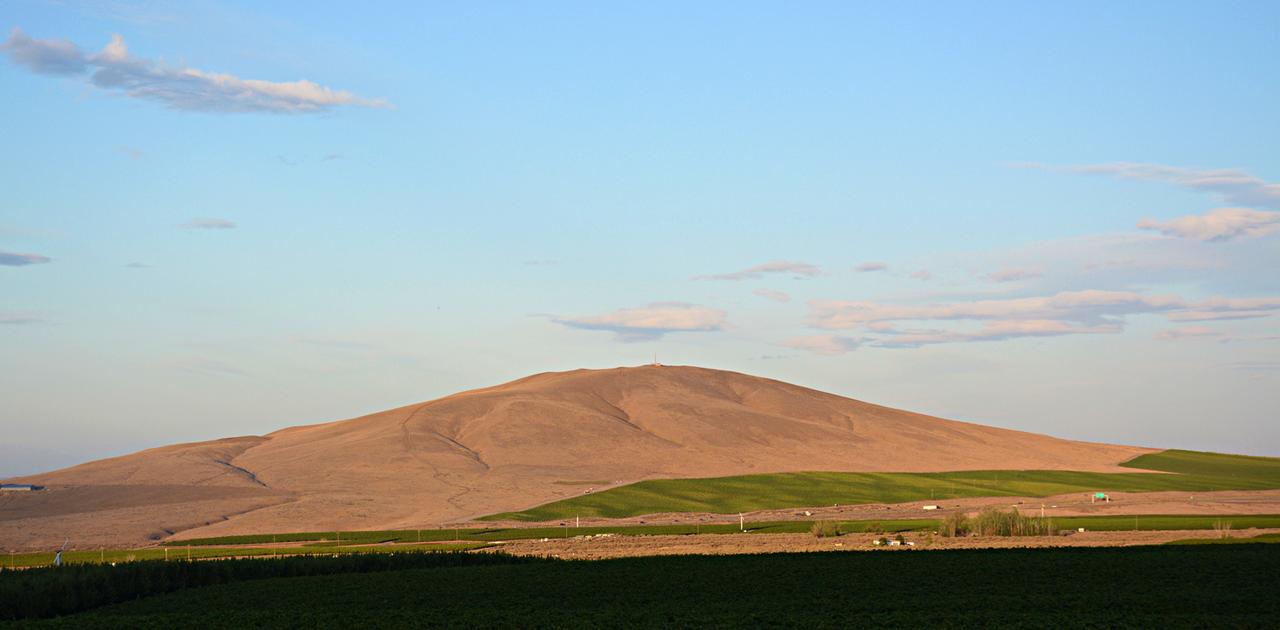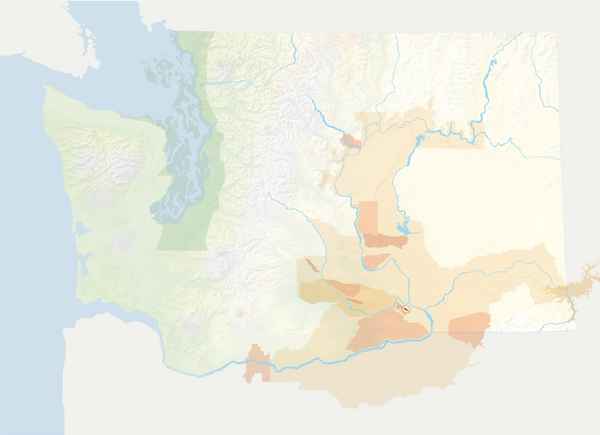
Candy Mountain AVA
Candy Mountain is part of a series of four mountains in the area, which also include Red Mountain, Badger Mountain, and Little Badger Mountain, that are collectively referred to as “the rattles."
Key statistics
2020
110 acres
5 inches

Characteristics
About the region
At 815 total acres, Candy Mountain is Washington’s smallest viticultural region. It’s also one of our newest. Established in 2020, Candy Mountain AVA’s vineyards are located on the southwestern side of the mountain, which has a slope of two to 20 degrees. Elevations in the appellation range from 640 to 1,360 feet above sea level, with the upper reaches above the Missoula Floods, a cataclysmic series of floods that define Columbia Valley soils.
Candy Mountain is part of a series of four mountains in the area, which also include Red Mountain, Badger Mountain, and Little Badger Mountain, that are collectively referred to as “the rattles” due to their alignment with the larger Rattlesnake Mountain. Candy Mountain is also part of the Yakima fold belt that comprises many of eastern Washington’s viticultural areas.
Candy Mountain lies four miles southeast of Red Mountain and generally has a similar, warm climate to that appellation. Like Red Mountain, it also has higher winds relative to the surrounding area.
The soils of Candy Mountain are composed of loess – windblown silt and sand – on top of ice age flood sediment. Soils are generally thin with decreased water holding capacity, allowing growers to stress vines as they see fit during the growing season. This also lets roots come into contact more easily with the basalt bedrock, which has a different suite of minerals than the topsoil.
Candy Mountain currently has 110 acres planted to vineyards, many of which are planted in a vineyard of the same name. There is currently one winery within the appellation. The appellation is wholly contained within the Yakima Valley appellation, which itself is part of the larger Columbia Valley appellation.

